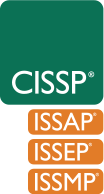SSCP Training Course Outline
Security Administration and Operations
The Official (ISC)² SSCP training provides a comprehensive review of the knowledge required to implement, monitor and administer IT infrastructure in accordance with information security policies and procedures that ensure data confidentiality, integrity and availability. This training course will help students review and refresh their knowledge and identify areas they need to study for the SSCP exam. Taught by an (ISC)²-authorized instructor, the course features:
- Official (ISC)² courseware
- Interactive flash cards
- Post-course assessment with 125 questions
- Collaboration with classmates (online instructor-led only)
- Real-world learning activities and scenarios
Who Should Attend
The training seminar is ideal for those working in positions such as but not limited to:
- Network Security Engineer
- IT Systems/Network Administrator
- Security Analyst
- Systems Engineer
- Security Consultant/Specialist
- Security Administrator
- Systems/Network Analyst
- Database Administrator
- Individuals operating in a security operations center (SOC) environment performing the role of incident handler, SIEM, forensics specialist, threat intel researcher, etc.
Course Agenda
- Domain 1: Security Operations and Administration
- Domain 2: Access Controls
- Domain 3: Risk Identification, Monitoring and Analysis
- Domain 4: Incident Response and Recovery
- Domain 5: Cryptography
- Domain 6: Network and Communications Security
- Domain 7: Systems and Application Security
Course Delivery Methods
Course Objectives
After completing this course, learners will be able to:
- Describe security and the alignment of asset management to risk management
- Appraise risk management options and the use of access controls to protect assets
- Examine the field of cryptography to secure information and communication
- Build a security posture by securing software, data and endpoints
- Apply network and communications security to establish a secure networked environment
- Evaluate cloud and wireless security
- Prepare for incident detection and response
- Implement appropriate measures that contribute to the maturation of risk management
 Certified in Cybersecurity
Certified in Cybersecurity  SSCP
SSCP  CISSP
CISSP  CISSP Concentrations
CISSP Concentrations  CCSP
CCSP  CGRC
CGRC  CSSLP
CSSLP